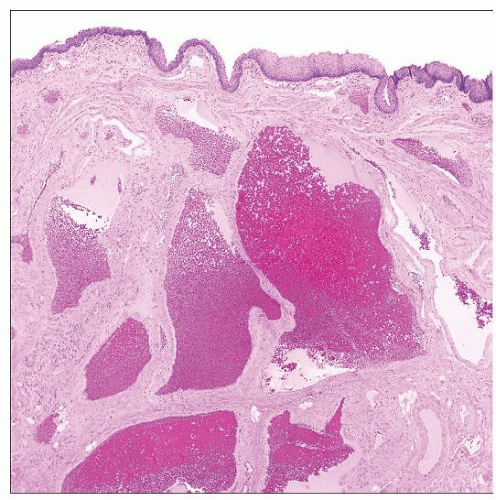Hemorrhoids
Julianne K. Purdy, MD
Key Facts
Terminology
Hemorrhoids are normal submucosal vascular beds
Hemorrhoidal disease when vessels dilate and symptoms develop
Clinical Issues
Internal hemorrhoids: Painless rectal bleeding
External hemorrhoids asymptomatic unless acute thrombosis
Microscopic Pathology
Dilated thick- and thin-walled submucosal vessels, thrombosis
Overlying mucosa may be ulcerated & inflamed
Fibromuscular proliferation in lamina propria, thickening of muscularis mucosae
Top Differential Diagnoses
Mucosal prolapse syndrome
TERMINOLOGY
Synonyms
Piles
Definitions
Normal submucosal vascular beds with smooth muscle and connective tissue (anal cushions) above and below dentate line
When vessels dilate and symptoms develop → hemorrhoidal disease
ETIOLOGY/PATHOGENESIS
Theories
Connective tissue and smooth muscle that anchor vascular cushions to sphincter deteriorate with age
→ displacement into anal canal and engorgement of vessels
Fecal bolus forces vascular plexus against hypertrophied anal sphincter
→ enlargement of vessels, symptoms
Vascular cushions similar to erectile tissue: Symptoms from swelling of cushions
Possible Contributing Factors
Pregnancy, inadequate fiber intake, chronic constipation, prolonged sitting and straining, chronic diarrhea
Stay updated, free articles. Join our Telegram channel

Full access? Get Clinical Tree





